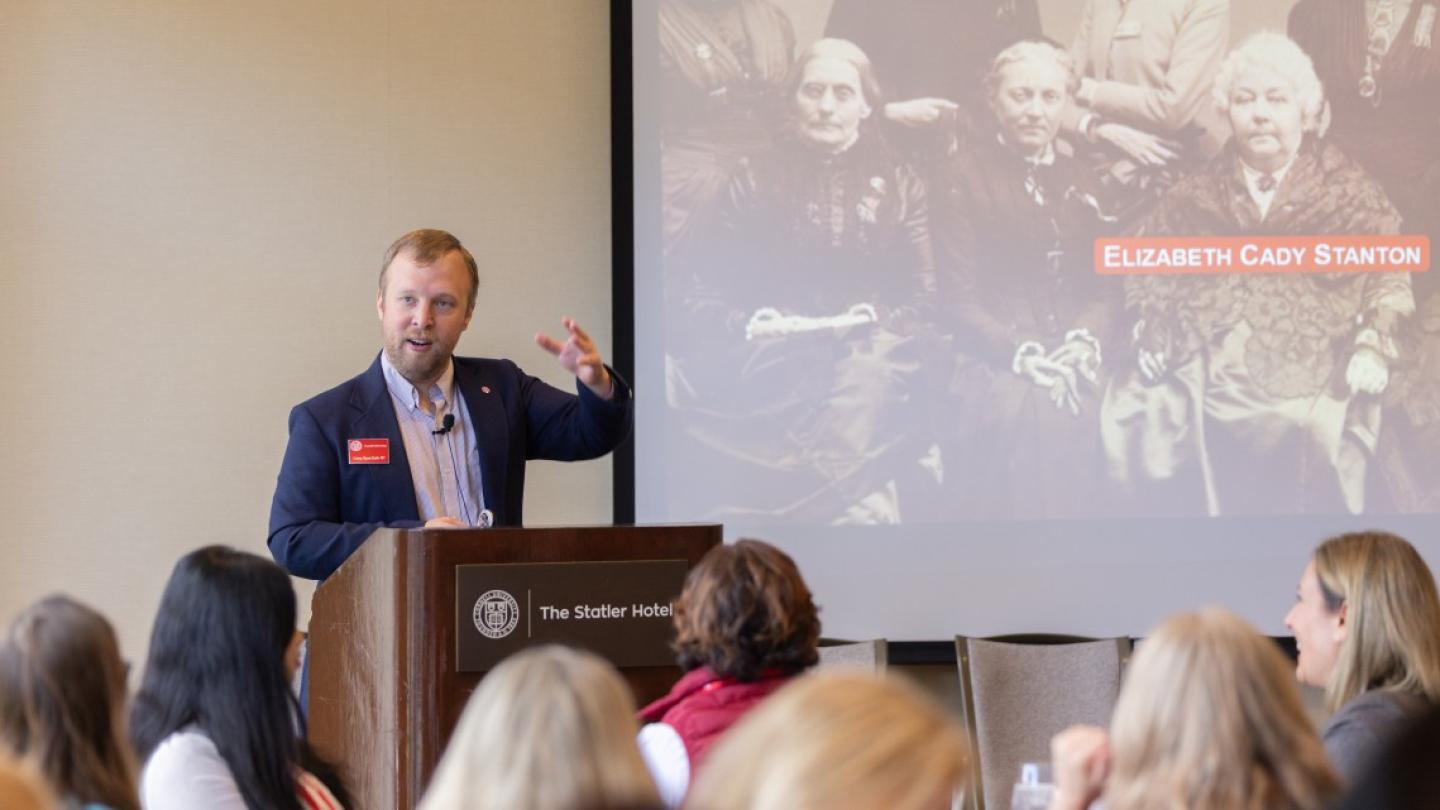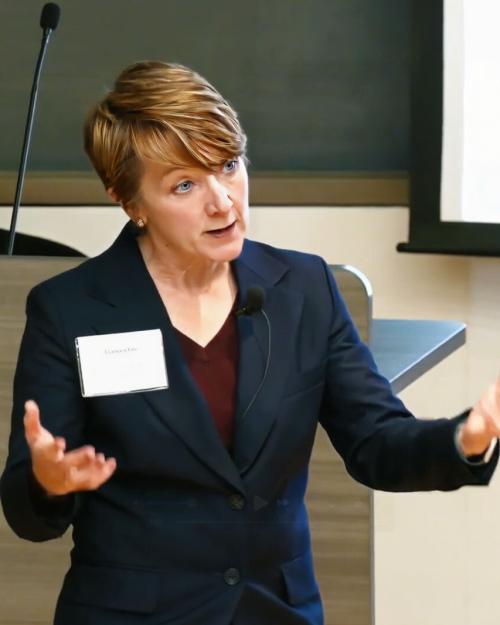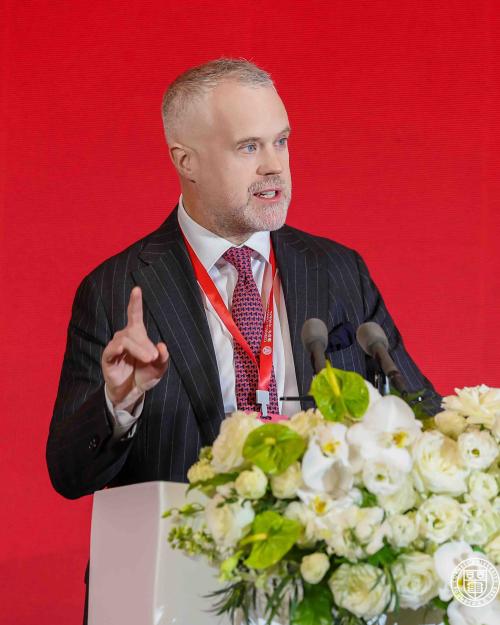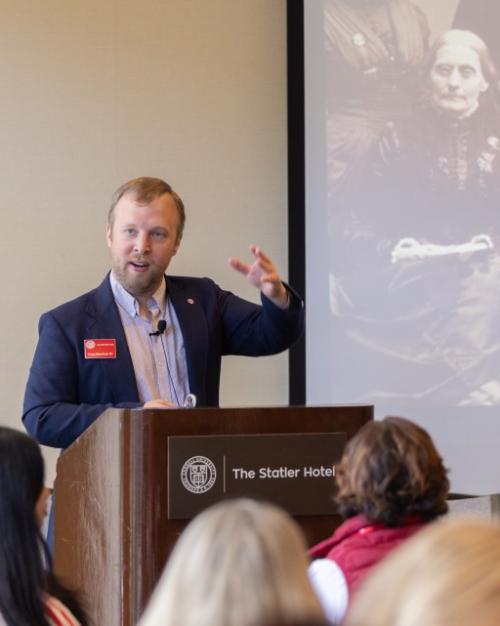Cornell historian Corey Earle shared stories of remarkable women throughout Cornell’s history during an Oct. 25 brunch as part of Trustee Council Alumni Meeting.
During the brunch, Earle—who is also a principal gifts associate team lead with Cornell’s Alumni Affairs and Development and a lecturer in American studies—covered the early history of the first women to attend Cornell all the way to the present, highlighting five women who have been named Cornell Entrepreneur of the Year within the past few decades.
“Ezra Cornell was really intentional with the words that he chose,” Earle said. “That ‘any person’ part of our motto is what helped us stand out from our peers.”
Both Cornell and A.D. White had strong women in their families, who helped shape their thoughts on co-education, Earle said, showing a photo of White’s mother who wrote him a letter saying, “I’m not so sure about your other ideas, but as to the admission of women, you are right.”
Cornell’s proximity to Seneca Falls, home of the first women’s rights convention, also held some sway, Earle said, adding that many of the leaders of that movement sent their children and grandchildren to Cornell.
Still, it took two years for the first woman to enroll and several more years for the university to establish the first women’s residence hall, named for Henry Sage, who donated the money for Sage Hall.
It would be many more years until women were fully accepted by the men at the school, Earle said. Some early Cornell women graduates were leaders such as naturalist Anna B. Comstock ‘1874, home economics pioneer Martha Van Rensselaer ‘1909 and labor rights leader Florence Kelley ‘1882.
Other notable early graduates included:
- Emily Barringer, one of the first women to graduate from medical school in 1901
- Jessie Fauset ‘1905, a key figure in the Harlem Renaissance
- Nora Stanton Blatch ‘1905, first woman to graduate with an engineering degree from Cornell and the granddaughter of Elizabeth Cady Stanton
Despite their accomplishments, women at Cornell faced a set of “ridiculously paternalistic rules,” Earle said, regarding such things as curfews, dress and how close they could sit to men.
The climate was even more hostile to women students of color, he said, with white women petitioning the university to deny them the opportunity to live in Sage Hall, the first women’s residence.
“Even though we have the motto, we haven’t always lived up to it,” Earle said.
But as time passed, rules eventually changed, as did some attitudes. One of those early rules, a requirement that women live on campus, remained until the 1960s. But after it ended and Title IX was passed, women’s enrollment at Cornell climbed considerably, and today women students now outnumber men.
Comstock ended up becoming the university’s first woman assistant professor and Van Rensselaer its first female full professor. And, of course, today three new residence halls are named for outstanding Cornell women – Ruth Bader Ginsburg, Barbara McClintock and Toni Morrison.
“As we celebrate the legacy of women, it’s interesting to look back at how entrepreneurial they were,” Earle said of the early graduates. “Nearly every single one went on to be the first in their field or the top in their field.”
The brunch was hosted by Entrepreneurship at Cornell, the President’s Council of Cornell Women and the Cornell Entrepreneur Network.





